In early 2020, just before the world changed, we had a SFP+ to 10Gbase-T Adapter Module Buyers Guide following a fairly long series that we ran. There we compared a number of SFP+ to 10Gbase-T modules, and it was fairly clear that there were different chips powering what was on the market at the time, along with different power and feature capabilities. Today, we are going to discuss the FS SFP-10G-T module that you may have seen in a number of our recent switch reviews.
FS SFP-10G-T Overview
While most STH readers are going to be familiar with the concept, let us take a moment to step back and understand what is going on here. Many modern switches have SFP+ cages. For example, we reviewed the FS S5860-48SC and FS S5850-48S6Q recently, along with a host of other 10GbE switches from other vendors. Normally, one would utilize SFP+ optics, and commonly some sort of LC connector optics like this long-range SFP-10GLR-31. Other times though, one may need a 10Gbase-T port using standard RJ45 wiring that is already installed in walls and possibly in client devices. We have seen both Intel with the X550 as well as Marvell with its Aquantia chips make 10Gbase-T more common in higher-end desktops. Even the Apple Mac Mini M1 can have 10Gbase-T. So the challenge is how to integrate SFP+ cages, designed for optics, with RJ45 cabled endpoints and wire runs.
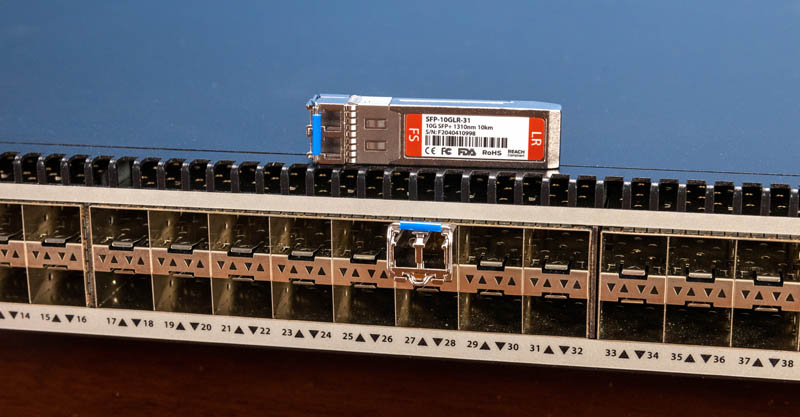
That is where SFP+ to 10Gbase-T adapters come in. One can utilize the lower-cost and lower-power SFP+ switches that handle mostly fiber optic networking, but then selectively add 10Gbase-T to switches as well.
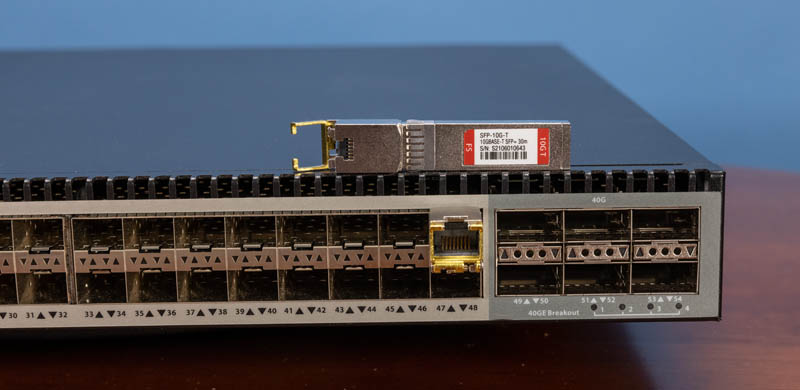
The modules FS sent us are the SFP-10G-T modules. These modules are designed to be used in switches and add 10Gbase-T capability instead of fiber. We always suggest checking switch guidelines, but the other aspect is that it allows one to mix ports on the same SFP+ switch. If you have 48x SFP+ ports, but need 8x 10Gbase-T, then it is usually less expensive to just use adapters than to get an entire switch with mixed ports.
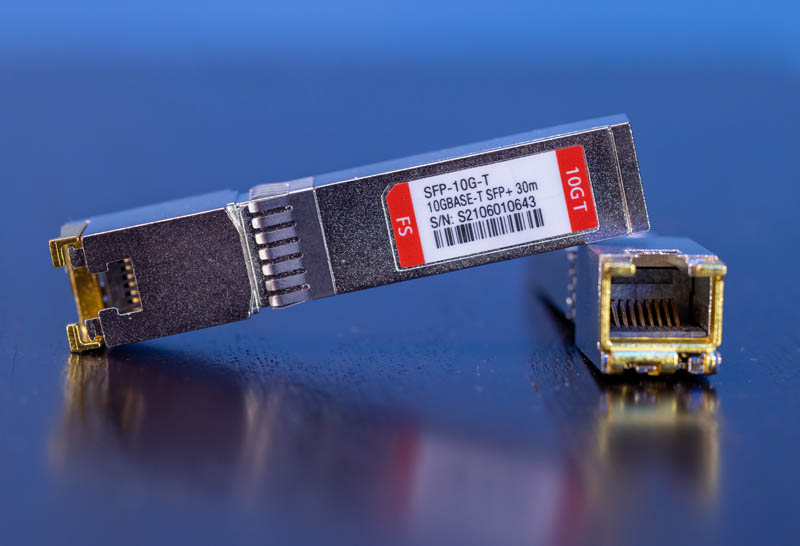
For a few other views, here are the connector views of the two modules:
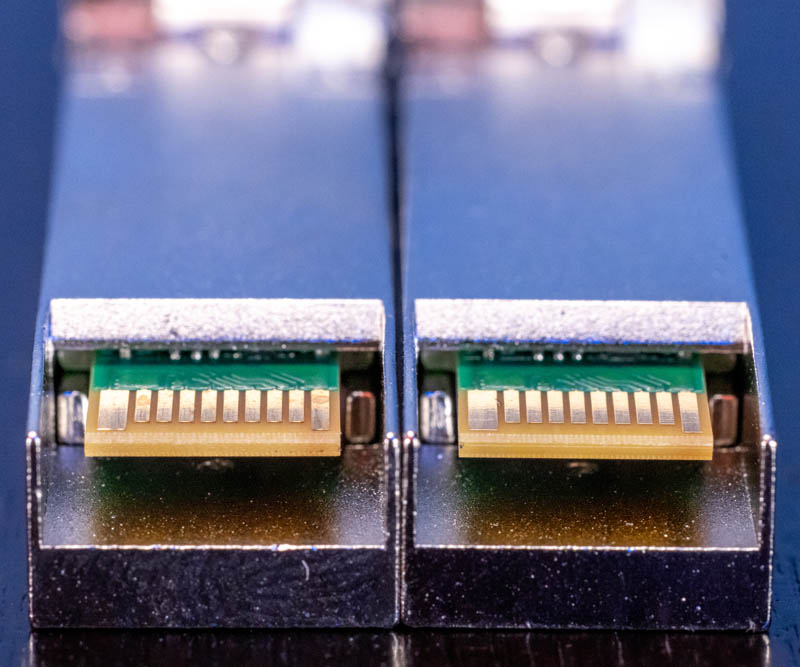
And here are the latches. As one can see, the part forward of the latches is a bit longer than on the optical transceivers, so these do stick out a bit further when installed.
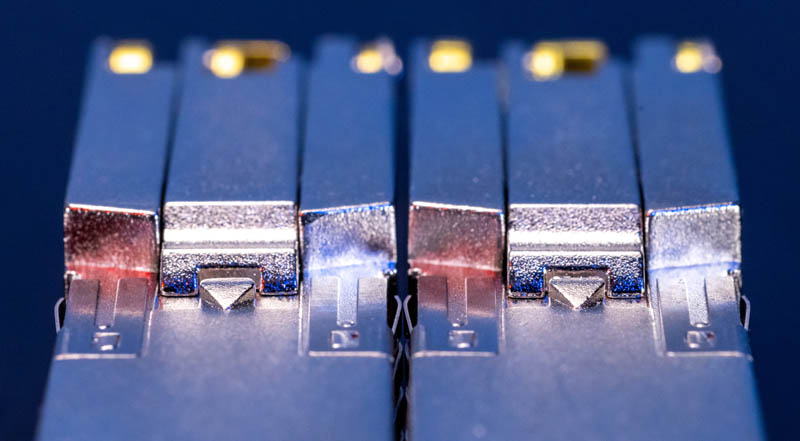
We are going to quickly note here that FS has three different modules. We have the 30m modules, but there are also 80m modules and industrial 30m modules available. The 30m and 80m is the distance that these are rated for over Cat6a/ Cat7. If you have older Cat5 wiring, then this is probably not the solution for you. If you want to span 100m, then you may need an actual 10Gbase-T switch. The distance specs are important.
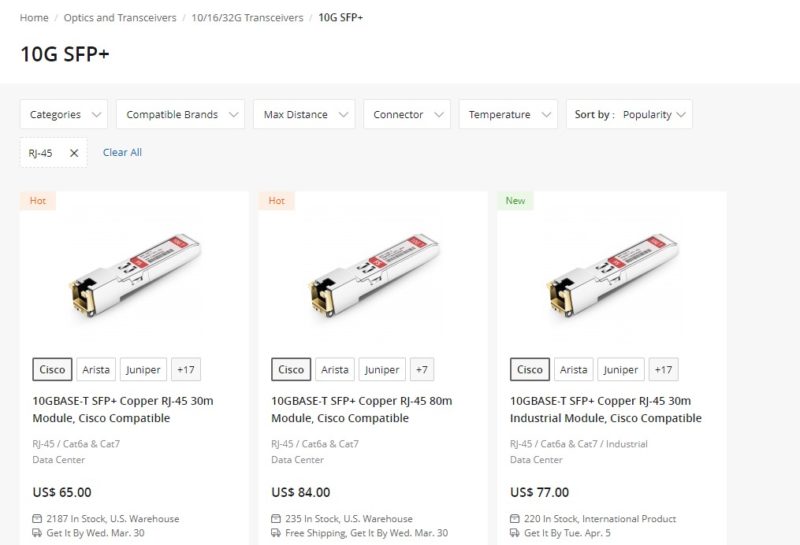
We will also note that FS can code these modules to different types of switches so that they will work with equipment that only accepts vendor-locked coded modules.
With that, let us get to the testing.
FS SFP-10G-T Nbase-T Capabilities
Something that we have noticed in the industry is that these SFP+ to 10Gbase-T modules tend to change internal components over time. Here is the table of what we have tested, with the big caveat that some of these SFP+ modules may have different capabilities (for better or worse) now than when we tested them if the vendor does not list specific features like 2.5GbE support.
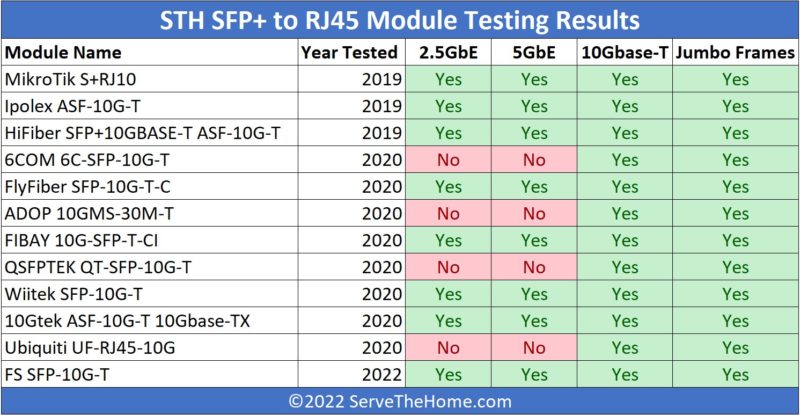
The FS module has the full feature set that we would expect from these modules especially as time has progressed.
FS SFP-10G-T Performance and Power Consumption
Taking our dozen modules out for a spin, we see that this module is offering top-tier performance.
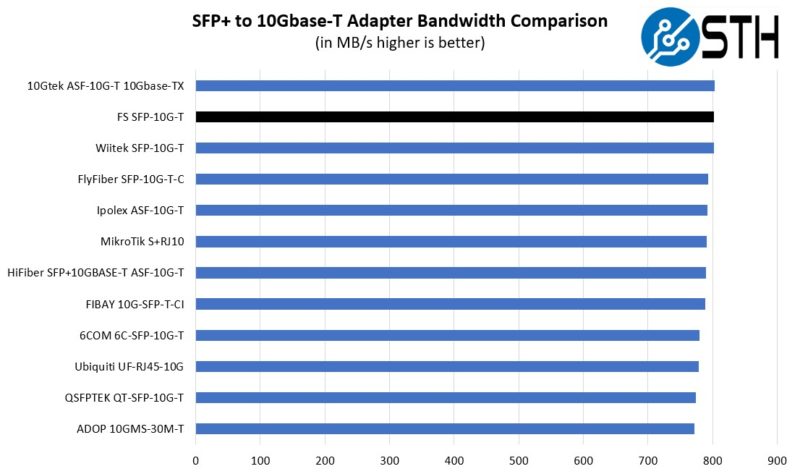
Again, this is the newest model we are testing, so that is expected.
We also saw power consumption increase to 2.7-3.0W at the outlet when using this module at 10Gbase-T speeds over a 30m cable. This is significantly more power than an optical module going over that same distance. That is normal for SFP+ to 10Gbase-T modules.
Final Words
Overall, these modules worked as we expected. This is a technology that has come a long way in the last five years. The modules themselves in the mid-2010’s sold for over $1000, but with recent advancements, module prices have fallen. FS.com now has these for $65 each. We will just note that, if you look back to our 2019/ 2020 series, prices were generally much lower but the market has significantly increased the price of these adapters over the past two years.
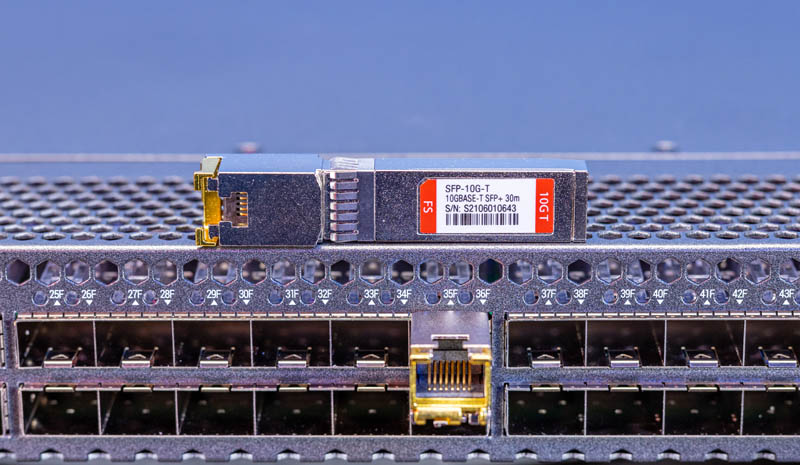
Still, the modules have worked well for us over the past 3 months or so of testing, so we thought it would be time for an update. Hopefully this helps our readers that have asked about this module in the past.

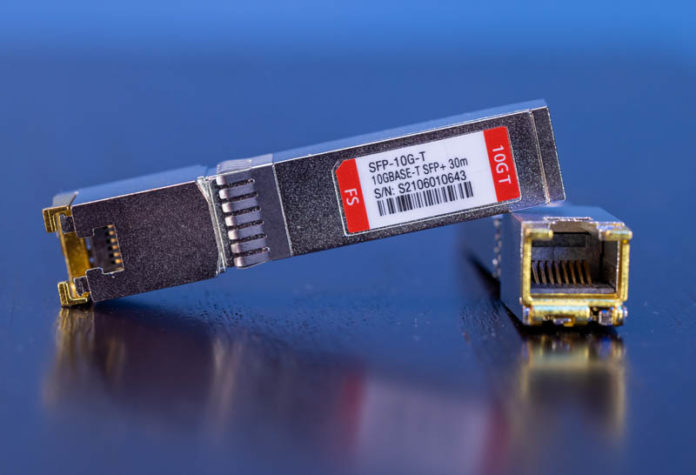

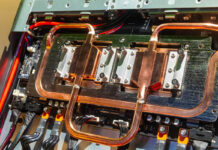

There’s also an “80m” version which seems to actually push further / more throughput than the standard “30m” ratings
With WiFi speeds increasing and access points starting to use 2.5 GbE connections, it would be interesting to know what options there are for getting PoE to work at these speeds. It would be nice if there was a way to attach a 2.5 or 5 GbE access point to an SFP+ port on an existing 10G switch, while injecting power to run the access point as well.
Malvineous> No PoE with RJ45-SFP modules. SFP switches are not PoE.
You need to use PoE injector or use a native RJ45 multi gig switch (2,5/5/10) with PoE.
Tried the longer distance module. Not really compatible with a MikroTik appliance. Return it after it kept spitting drops and errors. 10Gtek still gives me the best performance and low heat for. SFP+ to RJ45 module.
I work for a gov contractor and hardware security is always on my mind. I have used FS before in a non-secure environment. Is there any concern about SFP modules being from China?
@Malvineous: I don’t think that there’s any provision in SFP+ to provide remotely the kind of power that PoE would need. I assume that the exact point at which the switch just gives up and browns out the port varies by vendor and model; but I’ve never seen a quoted power limit higher than a handful of watts for an SFP+ module.
It looks like you can get the usual gross-but-functional PoE injector bricks in 10GbE as well, so if you are willing to put up with some ugliness not all is lost; but putting PoE levels of power into an SFP cage would be deeply nonstandard behavior(I suspect that there’s enough metal to manage it, if both the switch and the interface were in on the plan, you could exploit grounded shield/thermal metal, DC voltages on differential signal lines, stuff like that; but it would be a nonstandard hack).
The airplane I worked on 4-5 years ago had a 48 Port 10G Fiber switch (think it was Cisco), and, i remember being told that it’s SFP+ fiber adapters cost like $450 each? Ouch! That’s a chunk , filling a 48 port switch!
How well are these 10Gbase-T modules supported in SFP28 network adapters like E810 or ConnectX-6?
Did you guys really test NBase-T with these modules? I have a couple of FS 10GBase-T SFP+ 30m modules (manufacturing dates range from 2020 to 2021) and none of them can do 2.5GBit/s with my 2.5GBit/s USB3 adaptor. They provide 2.5GBit/s in one direction but only 100MBit/s in the other direction. Replacing these modules with Mikrotik S+RJ10 modules and I get 2.5GBit/s in both directions.
I bought a couple of these for N-BaseT applications but found them to be tricky.
Yes, they negotiate 2.5 and 5G connections with the downstream NICs, but what they don’t do is report THAT to the switch so it can flow-control the port.
As far as my Mikrotik switches were concerned, these are 1/10G optical modules that run a bit hot and throw lots of errors when trying to jam 10G through a 2.5G (or 5G) pipe.
So I replaced them with Mikrotik S+RJ10 modules – which DO report their speed to the switch. Now it’s 2.45Gbps in both directions. Shame its also 5/0.065 when used with a 5Gbps NIC, despite flow control being enabled. Buggy switch firmware I guess. In the end, I tossed the lot and instead leaned on QNAP for a 2.5G-SFP+ switch that just works perfectly to tie the low and high speed segments of my network together. So very annoying to be dealing with bugs like this on what should be a mature technology by now.
Problem is you haven’t tested 2.5 and 5 GbE in BOTH directions. They just can’t handle the traffic well. Nothing beats the original Aquantia AQS107 to this day.